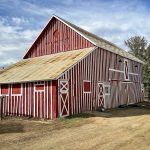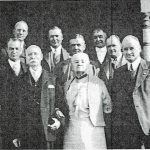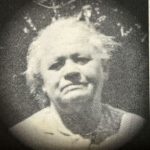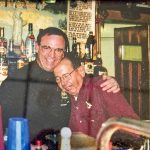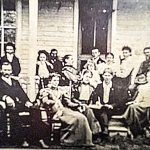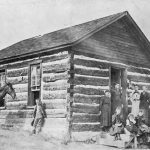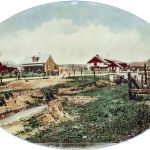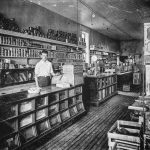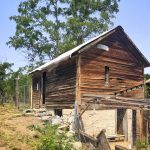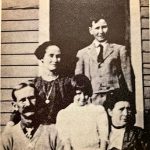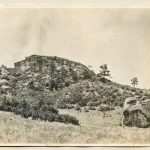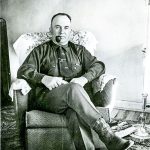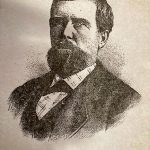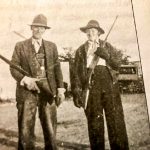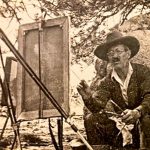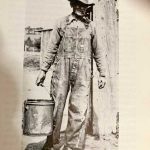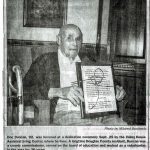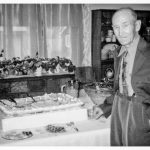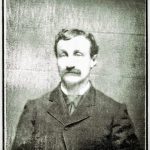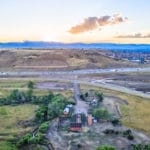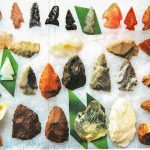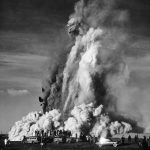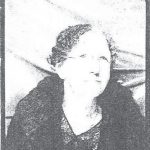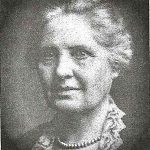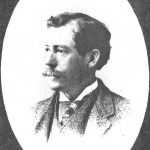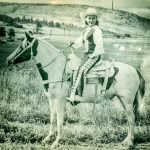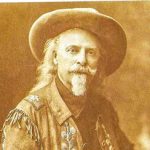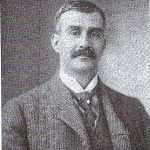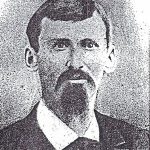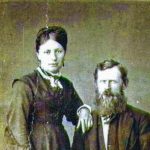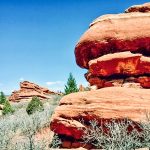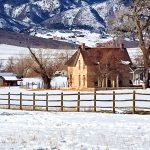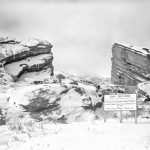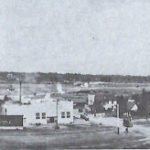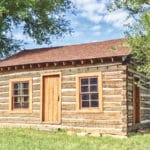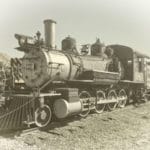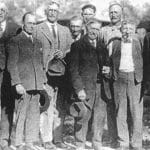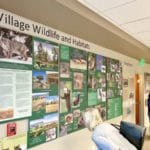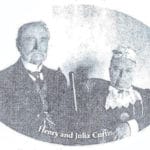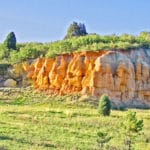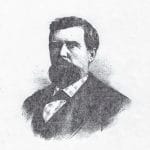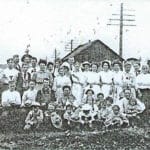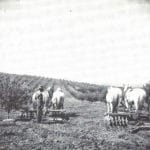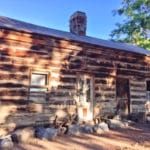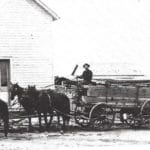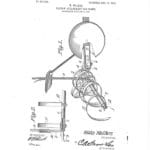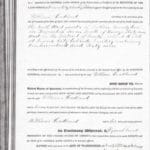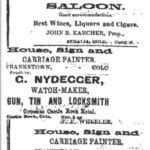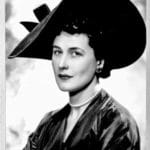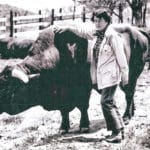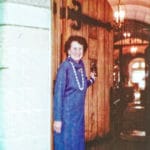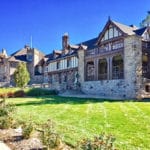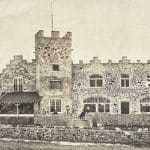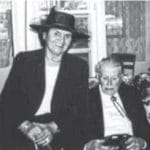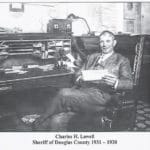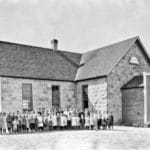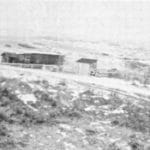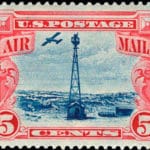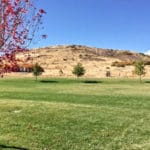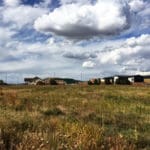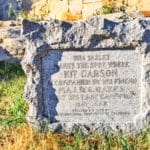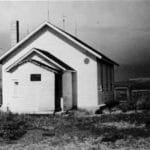
The Castle Pines Connection serves residents of the Wildcat Mountains, a name pioneers and historians gave to the Colorado high country paralleling I-25 from Highlands Ranch and Lone Tree south to Castle Rock. Since the first territorial road (Daniels Park Road) bisected our mountains, there was no shortage of colorful characters parading through what are now private properties on the ridges of Douglas County. We bring these grizzled and gutsy settlers alive again, vividly sharing their stories of grit and achievement in these Castle Pines.
Wildcat Lore is dedicated to digging a bit deeper in the attic of Douglas County history to better understand the life and motivations of local pioneers.
Today’s recreated frame of the iconic Higby Mercantile building sits windblown, almost forlorn, at what was once a major crossroad in lower Douglas County. At one time, the Denver and Rio Grande Western Railroad’s Pineland stop, its nutrient rich green grass persuaded author Helen Hunt to rename it “Greenland.” By the early 20th century, the…
Shakers and movers are colorful folks, visionaries and risk takers seeing and often seizing opportunities that others will not. Castle Rock’s founders John Craig, Jeremiah Gould and Philip Wilcox were prime examples. Pennsylvanian John Craig arrived here in 1859. Tragically, he had lost his wife and daughter in the preceding four years. Within the…
The headline comes from Yogi Berra, but it applies equally to the good folks of Jarre Valley and Jarre Canyon. Douglas County settlers were naturally attracted to water and transportation access: Witness Sedalia’s founder, John Craig, who settled at the confluence of East and West Plum Creeks. The east side of the creeks was…
Born in 1863 of Scotch lineage, George Patrick Stewart hailed from Murchison, Victoria, in Australia’s gold belt. After his storekeeper/postmaster father died when George was 7 years old, his uncle Izett Stewart transported him to the Isle of Jersey in England to live with his Aunt Helen. Nine years later, at 16, George rejoined Uncle…
Swashbuckler! Now there’s a colorful term seldom used today. One historical character that comes immediately to mind is D.C. Oakes of our Wildcat Mountains. Another bold, flamboyant and larger-than-life figure was Rufus “Potato” Clark, or sometimes called the “Spud King.” And sometimes he went by the moniker “Dad.”* Rufus was born to a Connecticut farmer…
Worn down by dismal life opportunities available to them in Somerset, England, Elizabeth Ann Dowden and her husband James Perry packed up, leaving the Isles in 1848. With sons James Dowden (James D.) and George, and 9-year-old daughter Elizabeth in tow, the family took passage on a ship to the United States. No luxury liner,…
Born in Lostivefel, England in 1844 during the reign of King Edward VII, Frank Sobey was raised in Dubuque, Iowa, where his parents had immigrated. Against their wishes and merely 15 years of age, Frank joined the Union Army. His family immediately disowned him. Despite his youth, he vindicated himself with great…
Have you ever hiked Sandstone Ranch? It is a grand, sculpted piece of Douglas County open space inventory bounded by Gove Creek and located south of Highway 105 and the Perry Park Road intersection. In 1870, 30-year-old Civil War veteran William “Allan” Dakan soloed westward to claim a cabin on lower Gove Creek, near blacksmith…
Young people of the 21st century seem to be marrying later and fretting more, enjoying the lack of early responsibilities prior to taking on life-altering commitments. A good plan if you’ve got money or accommodating parents. Not so with Sedalian Thomas Buntain. He served in the Civil War as early as 17, marrying his bride…
…in Greenland Until it burned to the ground again on May 11th of this year, the tallest building in Greenland, Colorado was a weather-seasoned red barn that was first built by Isaac Jegirtha Noe in the mid 1880s. His original three-cupola structure was first incinerated from a lightning strike in 1922. New owners at…
Writers have a tendency to hype their subjects. After all, why write about them if they were merely good? With the Sedalia Manhart Family, no doubt remains about their seminal role in the town once called Round Corral. That the main street is Manhart Street settles any argument. Christian Manhart’s birth in 1835 started things…
For years, many have lionized larger than life men and women who made our Douglas County great. As it should be. But the reality of pioneering outcomes in these parts is that most failed; their adventures were nasty, brutish and short. Local prosperity required many things: grit; water, agricultural, and animal husbandry savvy; and, above…
One of the more vibrant Wildcat histories is that of the Blunt family. It began 60 years after we became a nation in Franklin, Missouri. After son John Elmer, “John E.,” was born to John and Elmira Blunt in 1836, the family migrated to Kansas. In the Civil War, both father and son were distinguished…
In writing Wildcat Lore over the years, I have sought a home base, a spiritual center of gravity and a location suitable for the “capital” of our readership in these Wildcat Mountains. I finally figured it out: Round Top. We are all “Round Toppers.” Let me take you back a ways… Our readers’ homes are…
Until appointment as Douglas County Sheriff in 1947, John L. Hammond was just a regular guy of the time. Born 1904 in Iowa and raised in Akron, Colorado, Hammond’s upbringing was about ranching and moving cattle to and from the market. His dad would buy them young, fatten them up and bring them to the…
D.C. Oakes’ book, History of the Gold Discoveries on the South Platte River, is credited with giving the account of our gold rush, the one that brought 100,000 avaricious folks to Colorado in 1859. But the “table” had been earlier set by a handful of grizzled wayfarers like Kit Carson, Jim Baker, Jim Bridger and…
Pomeranian Prussians from Burow, Johann and wife Minnie (Glauss) Heuer arrived in the U.S. as immigrants in 1872. Iowa farmland looked good, so the Heuers claimed it, and they farmed it for several decades. Charles Hier (the Americanized spelling of Heuer) was their second son, born four years later. Growing up, young Hier’s lungs…
Last year, we featured Sedalia’s Dr. Minnie Love. She was a gifted, charitable woman and suffragette. But for some ill-advised pursuits in antisemitism, Love would have attained unadulterated fame. Her son, C. Waldo Love, noted another of her impolitic acts. She said of him that “[If he] didn’t have enough brains to get through school,…
Cotton picking was more important than schooling in Denison, Texas in 1882. After Joe Kouba and twin brother Reuben finished third grade, the family farm was all that counted. Apparently a marginal operation, the Koubas moved across the Red River to Marietta, Oklahoma, Native American territory in 1889. There, Joe also fell under the influence…
Born in Red Lodge, Montana in 1909 to mining industry magnate W. G. Duncan, William G. II (Bill) came to Sedalia in 1918 when his dad bought the old Beeman homestead. W.G. treasured the rural beauty and appeal of his new landscape and worked with Bill to preserve it for posterity. Though Bill’s father was…
One sees something of a mess on the southwest corner of State Highways 105 and 67 in Sedalia. Bad news. Abandoned property, right? Where are the bulldozers? Only old-timers know that the parcel embodies epic stories of two families, their fabric deeply woven into Sedalia’s rich history. Born in Canandaigua, New York, in 1833, restless…
By Joe Gschwendtner; photo courtesy of Sedalia Firehouse Museum Charlie Alexander was one of Sedalia’s more colorful locals, born a Hoosier in 1882. His early years were filled with hardship, and he was placed on an orphan train by his mother when he was 11 years old. He was one of 250,000 such children shipped…
By Joe Gschwendtner; courtesy photos Adam Martz, perhaps Sedalia’s most famous bachelor, was no shrinking violet. Those who have opined on his life, alleged that he was never outsmarted. In a bit of hyperbole, the Castle Rock Journal once reported in print that “any person who thinks he can get the best of Adam (by…
Article and photos by Joe Gschwendtner Precisely 150 years ago, ranchers on West Plum Creek acted on a need for their own church home in Bear Canon. Newton S. Grout, a former Union Army drummer, was chosen to lead the 1872 construction effort. He began by demolishing a primitive log schoolhouse on the site. Originally…
By Joe Gschwendtner; photo courtesy of the files of Sedalia History Museum and Gardens; courtesy photo Victor Marquis started his life off restlessly, a challenge from birth on. Born in 1839, in Avesnes, France, no one could really control him. Seeing the town as a hopeless place, at only 9 years of age, he stowed…
By Joe Gschwendtner; photos courtesy of the Sedalia Historic Museum and Gardens Jarre Canyon in Sedalia has been a prolific source of Douglas County history, attracting those among the most dynamic men and women of the County. So too, with Esme Harcourt Williams Couch. Charles Harcourt was born in Blatherwycke, England in 1869. Immigrating to…
By Joe Gschwendtner; newspaper clipping courtesy of Kyle Scott No one exactly knows why Alexander Scott Sr. chose Castle Rock to homestead. Born in Arbroath, Scotland in 1840, he married Jane Morton in 1865. The couple wanted more, at least more than Arbroath offered, and immigrated to America a year later. After a three-year stay…
Article and photo by Joe Gschwendtner History Colorado recognizes ranches and farms operated by the same family for over a century. Eight properties in Douglas County have received the coveted Colorado Centennial Farms & Ranches award. Though ownership recently changed, the family continuity of the Winkler Ranch was 55 years greater than then its nearest…
By Joe Gschwendtner; photo courtesy of Rose Tuggle Collection of the Schweiger Ranch Foundation John Schweiger was raised in Zell am Ziller, Tirol, Austria. Draftable into the Austrian army, he found a berth on an American-bound ship out of Bremen days before he turned 21 in 1867. Stateside, John found work in Tennessee and Georgia’s…
By Joe Gschwendtner; photos courtesy of Sedalia Historic Museum and Gardens In 1897, President Grover Cleveland began to protect America’s resources, designating 21 million acres of timberland as National Forest. He appointed Colonel W.S. May as his Colorado and Utah Forestry Superintendent who then immediately advertised the need for rangers. A determined 20-year-old Sedalian, William…
By Joe Gschwendtner; photos courtesy of the DCL archives and Local History Section Unlike both his father and brother, Mort Penley was not a man of the cloth. The beauty of the English Cotswolds could also not hold him. In 1878, his 20th year, he sought new horizons. Crossing the Atlantic on the steam vessel…
By Joe Gschwendtner; courtesy photos This tale of two towns begins with Junietta Patience Freelove Peckham and Orello E. Frink (O.E.), who were married in DeRuyter, New York in 1877. Both driven and bold, they went west with their three children, making Denver home. O.E. succeeded early in meat retailing and milk processing. In 1893,…
By Joe Gschwendtner; photo courtesy of Western History Section, DPL Outliers make for legends. Bengt August (“Gus”) Nelson was one of them. Born in Falkenberg, Sweden in 1863, it was Gus’ destiny to become a great one. Great granddaughter Jo Nelson Bradford called him “a tough old bird.” At 18, Gus took passage on a…
By Joe Gschwendtner; courtesy photos William Thompson Lambert was born in 1850 to devout Quakers Joseph and Cynthia (Meader) Lambert of Blackstrap, Maine. William was an only child, sickly at that, with bleeding lungs. His frail condition was likely the chief factor in the family’s migration west in 1856 for a drier climate. Muscatine, Iowa,…
By Joe Gschwendtner; photos courtesy of Fern Adams Seventy-six years old with 42 grandchildren makes for an epic story at any time. Perhaps being born on July 4, 1857 was a portent. Spring 1865 found Emma Jane in Waterloo, Iowa with sisters Ida, Eva, Etta and Nellie in a Conestoga wagon, wearing sunbonnets heading west.…
Editor’s Note: Last month, The Connection featured Charleys Gurley Love and his wife Dr. Minnie Celia Francesca Love in “To Sedalia with Love.” We chronicled their lives together and Minnie Love’s work following her husband’s death, including her accomplishments in the medical field, her activism in women’s suffrage, her participation in local government and her…
By Joe Gschwendtner; photo courtesy of Fern Adams The town of Sedalia has been a backdrop to many remarkable life journeys. It speaks highly of Douglas County’s allure that a disproportionate number of talented people would put their roots in the area. One of the more fascinating sagas is that of Dr. Minnie Celia Francesca…
By Joe Gschwendtner; courtesy photos In 1859, Sarah Coberly operated a halfway house rest stop in Huntsville, on the stage road to Colorado Springs. Husband James died early of an Indian arrow in Franktown. She had three daughters, Hersa, Mattie and a third, the adopted Lizzie Fields. Hersa first met the gallant Silas Soule as…
By Joe Gschwendtner; courtesy photos Before Castle Rock and New Memphis were settled, a traveler on the First Territorial Road (Daniels Park and later, Santa Fe), would have seen a circular stock pen owned by John Craig. Craig’s small community became known as Round Corral. When William Palmer’s Denver & Rio Grande Railroad puffed through…
By Joe Gschwendtner; courtesy photos Near West Plum Creek’s headwaters, Sandstone Ranch’s story is rich and colorful, a stitched-together history of many pioneers. The earliest was Charles Richardson, an 1873 homesteader who claimed the first parcel. A year later, a bold woman for the times, Elizabeth Robinson of West Point, Illinois, homesteaded and became his…
An American original By Joe Gschwendtner; courtesy photos An unsullied hero is rare in these times. Unusual too, is a person who defined an era and culture simultaneously. William F. Cody was an egalitarian when civil rights were ignored or violated in a rush to settle new frontiers. If, as parents today, we seek antidotes…
By Joe Gschwendtner; photos courtesy of “Our Heritage: People of Douglas County” Our early Douglas County pioneers knew well the meaning of the “Wild, Wild West.” They lived its hardships, pain and unpredictability. Whether from Europe or the East Coast, the life left behind was more urbane. Quiet. Civilized. So was it for Samuel (Sam)…
Article and photos by Joe Gschwendtner Joe Bucknam, traveling salesman from Iowa, found his way to Denver with wife Minnie in 1907. Finding fascination in the Sedalia area, they founded the Woodbine Ranch in Jarre Canyon in 1915. The main lodge was a substantial, multi-use building. Decorated to Joe’s rustic tastes, it showcased vintage weapons,…
Article and photos by Joe Gschwendtner; photo courtesy of the Douglas County History Research Center Born in 1850, Isaac Jegirtha (I.J.) Noe hailed from Charlestown, Indiana. After a common education, he devoted his early years to farming. That was, until he fell in love and married Jennie Caine of Clark County in 1878. Meanwhile, his…
Article and photo by Joe Gschwendtner; courtesy photo To study Douglas County’s early history is to dig into events around the headwaters of Plum and Cherry creeks. Nowhere is it more colorful than the upper Plum Creek basin, where John Perry, Ben Quick and John Kinner harnessed their lives to the spectacular high-country meadows. In…
Unfinished symphony By Joe Gschwendtner; courtesy photo Hotel Nanichant was completed in 1889 to accommodate visitors to the planned Village of Lake Wauconda, its Native American name meaning echo. In 1891, Bela Hughes’ son-in-law, Charles Roberts, built his own home there calling it the Manor House. It is still in use today as the Perry…
Article and photo by Joe Gschwendtner; information sourced from Fading Past: The Story of Douglas County, Colorado by Susan Consola Appleby Periodically we golf at Perry Park. When on the course, it is impossible not to be drawn into the sheer, raw beauty of the place. Like Roxborough Park, this tucked-away enclave captures true Colorado…
Article and photo by Joe Gschwendtner Ben Quick was born in Monroe County, Ohio in 1828. Orphaned at 10, he took interest in carpentry and by 16 had become a carpenter’s apprentice, moving to Missouri with his brother Cornelius. Daring to dream big, when word of the gold strike at Sutter’s Mill rocketed eastward in…
By Joe Gschwendtner; photo courtesy of Carol Oliver Lyons Long before Little Orphan Annie appeared in American cartoons in 1924, comparable hardship stories like hers played out daily in the American west. Such was the early life of Elizabeth “Lizzie” Field and her family, originally from Wesleyville, Pennsylvania. As an 11-year-old, Lizzie came inauspiciously into…
By Joe Gschwendtner; courtesy photos The stock market crashed on Black Friday in October 1929, ending the Roaring ‘20s. That day marked the beginning of the greatest economic downturn these United States have ever known. President Franklin Roosevelt sought ways for the federal government to stimulate the economy. One program was the Civilian Conservation Corps…
Article and photo by Joe Gschwendtner; photos courtesy of Juni Fisher Historical research is fascinating. One clue leads to another and remarkable stories are unearthed. Jarre Canyon west of Sedalia has plenty. Juni Fisher, award winning singer, songwriter and entertainer memorializes her colorful Sedalia heritage in her “Gone for Colorado” album. Alphonse Jarre came to…
By Joe Gschwendtner: photos courtesy of Denver Public Library The Roaring ‘20s in the Wildcat Mountains did not lack excitement. Bootlegging and gambling were rampant, especially in Larkspur, where the Feds found and busted the two largest moonshine stills in the county. Their proprietors would do 3-5 years in the pen. Perhaps the headline event…
By Joe Gschwendtner; photo courtesy of the Colorado Historical Society Yes he was. Tom Campbell. Dead. Finished off with a bullet in George Manhart’s dance hall in Sedalia on Saturday, May 6, 1899 as reported in The Castle Rock Journal at the time. Campbell, aka Thomas Jackson, was a tough customer. Well-known in Douglas County…
Article and photo by Joe Gschwendtner; photo courtesy of the Colorado Historical Society As we left 1871 Huntsville in the throes of death in our Wildcat Lore last month, commerce shifted rapidly south to Larkspur. This was due in no small measure to relocation of the post office and arrival of the Denver & Rio…
Article and photo by Joe Gschwendtner; photo courtesy of the Colorado Historical Society Named for Colorado’s fourth Territorial Governor, Huntsville history was fleeting but colorful, beginning in 1859. Located on the Territorial Road north of Larkspur, Huntsville owed its existence to lumbering, clay extraction, traveler accommodations and security. In 1858, Iowans Sarah Ann and James…
By Joe Gschwendtner; photo courtesy of Brett Wiebold Readers may recall the grit and determination of General William Jackson Palmer in bringing narrow gauge rail service to Douglas County. Yet few know of the places it served, many of them ghost towns today. Please join us back in time on the southbound Denver & Rio…
By Joe Gschwendtner; photo courtesy of Scott Terhark Collection, Douglas County History Research Center, Douglas County Libraries Not long after the Homestead Act opened the West, some Douglas County settlers became farmers and ranchers. Rolling terrain of small valleys and gulches with low density population offered vast open areas rife with protein-rich grasses ideal for…
By Joe Gschwendtner; photo courtesy of Newspaperarchive.com People and towns came and went in the early days of statehood. Had it not been for an obscure notation on a map, the once thriving town of Lehigh would have been a forgotten Wildcat town. In 1878, coal was a valuable commodity in an industrializing world. When…
By Joe Gschwendtner; photos by Terri Wiebold In late March, the formerly bare-walled community room at the Castle Pines Homes Association building received a makeover. A once humdrum meeting space, it now includes a mini-museum focusing on the first 100 years of Wildcat Mountain history. No small project, the curation began from scratch. The process…
By Joe Gschwendtner; photos courtesy of Archives & Local History – Douglas County Libraries In 1849, Henry H. Curtis took Julia Paddison to be his bride in South Wales. He was 19, she 21. Seems that Henry, an apprentice jeweler was summoned to repair the Paddison family clock. Clearly, time was on Julia’s side, as…
By Joe Gschwendtner; photos courtesy of Kevin Grenier, Douglas County Historic Preservation In Douglas County’s early years, hillside lumber yielded logs which were the basic building blocks of construction. Whether log cabins or storefronts, wood carried the day. Rhyolite was used periodically, but for larger and commercial projects. It was also in limited supply, even…
By Joe Gschwendtner; photo courtesy of Heritage Collection “History of City and Arapahoe County,” 1880 Major D.C. Oakes struck pay dirt in the California Gold Rush. Returning to Iowa in 1853 to marry, he invested his $6,000 profit in a contracting business. When the business faltered and money dwindled, he chased rumors of gold in…
By Joe Gschwendtner; photos courtesy of Sedalia Historic Fire House Museum and Gardens Harriet (Hattie) Davis Beeman was made of tough stuff. Kevlar before its time. Born in Denver in 1885, at age 9 she moved with parents and family to a farmstead on Upper Riley Hill Road (Daniels Park). She attended Round Top School…
By Joe Gschwendtner; photos courtesy of Douglas County Historical Society Ironically captured primarily in black and white, Sedalia’s story is actually quite colorful. She had four names. She was sold out. She vied for county seat. She was set upon by grasshoppers in 1873. And, she experienced a shootout at the Round Corral. Let’s start…
Article and photo by Joe Gschwendtner Sylvester Richardson was a driven man. Raised in New York’s Catskill Mountains, he worked in the family vineyard near the Hudson River. No vintner he, and in his 30s dreaming bigger dreams, Richardson migrated west, first to Wisconsin. There he attempted to capitalize on his horticultural experience by starting…
By Joe Gschwendtner; photos courtesy of Our Heritage and People of Douglas County FARMING: Early pioneers had limited options for a livelihood. Most were in agriculture of some kind, as subsistence was the first order of business. Through trial and error, settlers found the workable methods, soil and water sources that could support their needs.…
By Joe Gschwendtner; photo courtesy of US Patent office and Douglas County Library History Research Section Willis Walker likely often lived in the shadow of his wife Sarah, known nationwide and internationally for her work with Colorado wildflowers. On closer historical inspection, we find that Willis was no shrinking violet. Born in 1858 and later…
By Joe Gschwendtner; courtesy photo In 2003, Castle Pines Village excavations gave rise to a Nancy Drew-style mystery. While digging utility trenches for Hidden Pond Road, construction workers uncovered the grave of a young woman, most likely buried before the Homestead Act of 1862 opened these lands up to private ownership. Unidentified bodies are a…
By Joe Gschwendtner; photo courtesy of The Bureau of Land Reclamation (U.S. Government) William Headland was an early homesteader in the Castle Pines Village area. Having paid $200 cash for his 160 acres in 1870, his holdings centered on Saxon Place. By 1880 he had comfortably settled in on his ranch and found himself a…
By Joe Gschwendtner; photo courtesy of the Castle Rock Journal John B. Karcher of Sedalia was a Frenchman by birth. A large landholder in Alsace Lorraine, he was politically and socially active and a 32nd degree Mason. In his late 30s he was expelled from France because of his anti-Napoleonic tirades. His property was seized…
Part three of three By Joe Gschwendtner; photo courtesy of Cherokee Ranch & Castle Much has been said and written of Tweet Kimball, Cherokee Ranch owner who died in 1999. What often remains uncaptured is her essence. At her very core she was a naturalist, appreciative and dedicated to her world of animals, the environment…
Part two of three By Joe Gschwendtner; photo courtesy of Cherokee Ranch & Castle Last month, we tracked the history of the Cherokee Castle and Ranch after Tweet Kimball acquired it in 1954. Indeed, her impact on virtually everything she touched and those she encountered was outsized. Comfortable in rugged ranch hand garb or equally…
Part one of three By Joe Gschwendtner; photo courtesy of John Lake and Meg Anderson Were there a Colorado Mt. Rushmore, Tweet Kimball’s profile might well be chiseled there. Born in 1914 Tennessee, where women wielded limited political power, Bryn Mawr-educated Mildred Genevieve Montague “Tweet” Kimball never got the message. After acquiring Charlford Castle in…
Article and photos by Joe Gschwendtner The Lawrence C. Phipps Jr. who purchased the Kistler and Welte properties and named it Highlands Ranch was connected and wealthy, the son of a Carnegie steel magnate and U.S. Senator from Colorado. His position in life allowed for many uncommon opportunities, and he seized them often and successfully.…
By Joe Gschwendtner; photos courtesy of Josephine Marr’s “A Historical Journey” and the Douglas County History Research Center Riveting history often includes stories of places larger than life. In the northern Wildcat Mountains, there were two castles of note: the Springer Cross Country Mansion and the Cherokee Castle. Somewhat on the smaller side, neither compared…
By Joe Gschwendtner; photo courtesy of Amy and Dave Flanagan Last month, The Connection left readers with Arthur (Art) Ceresa and his wife Mary, “a gracious woman,” who slowly, shrewdly gained control of today’s Surrey Ridge area from the Schweigers and brothers Joseph and Alois Kroll at the astounding per acre price of $6.25. The…
Article and photos by Joe Gschwendtner Joseph Kroll and John Schweiger Sr., likely met in the Leadville mines after emigrating from the Austrian Empire around 1870. With modest savings and presumed collaboration, they found their way to our Wildcat Mountains. Through Homestead Act acquisitions and the diligence of Max and John Schweiger Jr., the families…
By Joe Gschwendtner; photo courtesy of “Walk with our Pioneers – A Collection,” by Alice M. Thompson In our July segment of Wildcat Lore, we encountered the Wolfensbergers, Reynolds and Bardells, homesteading risk-takers in these Wildcat Mountains. Dreams came true only for the Wolfensberger families while the others were crushed by accidents and poor health.…
By Joe Gschwendtner; photos courtesy of “I’d do it again” by Sarah A. Gleason, Copyright 1982, Century One Press Sarah Gleason was an only child of Irish immigrants born in Colorado City. She taught school in Douglas, Weld and Jefferson Counties from 1926 to 1978 and was widely recognized as an extraordinary teacher. During…
Article and photos by Joe Gschwendtner; photo courtesy of Douglas County History Research Center Public education was so important that it was addressed in the Articles of Confederation by our Founding Fathers. The 1785 Ordinance for the Western Territory provided for schools by reserving sections NW16 and SE36 of every township open to homesteaders. Local…
Article and photos by Joe Gschwendtner Sixteen years after the Wright brothers’ epic 1903 first flight, night-time navigational aids (other than bonfires) were non-existent. With the demand for airmail growing ever stronger, night flight was inevitable. Two pilots, Don Bruner and Jack Knight, figured it out. Artificial beacons on high terrain could be used…
Article and photos by Joe Gschwendtner Thirty-six million years ago a massive volcanic eruption near Mt. Princeton hurled molten rock and gases into Douglas County. Traveling nearly 100 miles per hour and landing in parts of Park and Teller Counties as well, the quick cooling ash created 15-30 foot layers of “Wall Mountain Tuff” classified…
Turn-of-the-century Douglas County pioneers were tough and uncomplicated. They lived in the moment. Dreams of their future were marred by hostile Indians, locusts, parched lands, dried-up streams and rattlesnakes. Long-term planning didn’t come naturally. Surprisingly, there were two remarkable people, mere miles apart, who envisioned the future of our county and acted in unique ways…
Article and photos by Joe Gschwendtner Events in Colorado history didn’t really accelerate until the 59ers swarmed the Pikes Peak region, Russellville (near Franktown) included. By 1861, Colorado would become a territory and in another 15 years, attain statehood. Those 17 years to statehood were tumultuous. No one suffered greater upheaval than the Native American. …
Article and photo by Joe Gschwendtner Wildcate Lore Beginning this month, The Connection will be featuring a column titled “Wildcat Lore.” As it turns out, the Castle Pines Connection serves residents of the Wildcat Mountains, a name pioneers and historians gave to high country paralleling I-25 from Highlands Ranch and Lone Tree south to Castle…
Information provided by Douglas County; photo courtesy of the Larkspur Historical Society Recognizing and celebrating the month of May as Archaeology and Historic Preservation Month, Douglas County will offer a rare glimpse into the operation of one-room schools of the early 1900s with tours and an Open House of the historic Greenland School on Saturday,…

